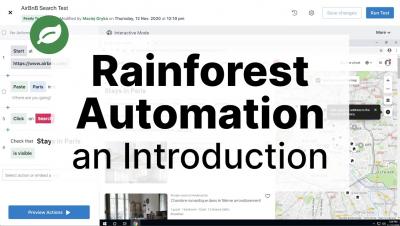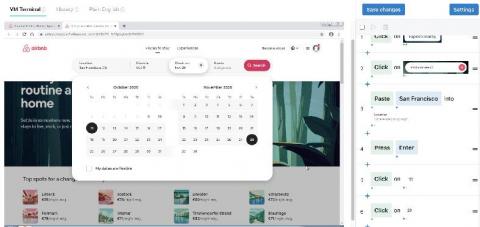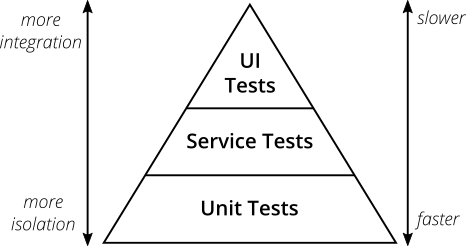Systems | Development | Analytics | API | Testing
Rainforest
Testing a sign up flow using Rainforest Automation, which is a no code testing platform for automated and manual QA testing. This shows a few advanced features useful in testing sign up flows, including data generation, email workflows and encapsulating common actions in embedded tests. This kind of automated end-to-end test is impossible with traditional test automation.
Starting a test run in Rainforest
Details on how the New Run modal works to start a new run in Rainforest
Rainforest Automation - Testing a Google Drive upload
Testing Google Drive file upload using Rainforest Automation, which is a no code testing platform for automated and manual QA testing. This is an interesting example because it requires access to and interaction with the filesystem, as well as several complex interactions including drag and drop. This kind of automated test is impossible with traditional test automation.
Rainforest Automation - a Quick Introduction
A quick introduction to Rainforest Automation, which is a no code testing platform for automated and manual QA testing.
New in Rainforest
Watch us at our latest installment of our "New in Rainforest!" webinar series, where Fred, CEO, and various members of our product and development teams shared the latest and greatest Rainforest features they've been building! Topics we are covering.
QA at the Speed of Development
Face it. Your development process has a bottleneck. Quality Assurance. You've been tolerating it, but it's getting worse. Your devs could do it when you were smaller but then it ate up too much of their time. Then you built a QA team, a big one... maybe even offshore.
The Downfall of DOM and the Rise of UI Testing
In this session, CEO Fred and Engineer AJ review the pitfalls of DOM-based testing. At Rainforest, we believe the standard tools of the QA industry have fallen short of providing developers intuitive and easy-to-use tools that test their applications in a realistic way. In order to deliver a product that can bridge the gap between testing and reality, we’ve built our own virtual machine infrastructure that allows our automation to be run on any browser or operating system.
Rainforest QA: On Demand QA Solution for Continuous Delivery
It's time to re-think QA and bring it into the era of continuous delivery. Rainforest is an on-demand QA solution that enables you to discover significantly more problems that affect the customer experience before code hits production and does so at the speed of continuous delivery.
The Downfall of DOM and the Rise of UI Testing
In our last post, we looked at the multiple layers of testing and where UI tests fit into your overall architecture. In case you didn’t read it, here’s a TLDR: Testing architecture can be grouped into 3 “layers”: Layer 1 tests tiny chunks of code in complete isolation. Layer 2 tests larger pieces of code in partial isolation.
The Layers of Testing Architecture
The landscape of software testing is changing. In the hyper-competitive world of technology, speed and quality are often seen as opposing forces. We are told to “move fast and break things” if we are to succeed in getting our products into the hands of users before our competition beats us to the punch. This often times means sacrificing quality and confidence in the name of getting new features out the door.











